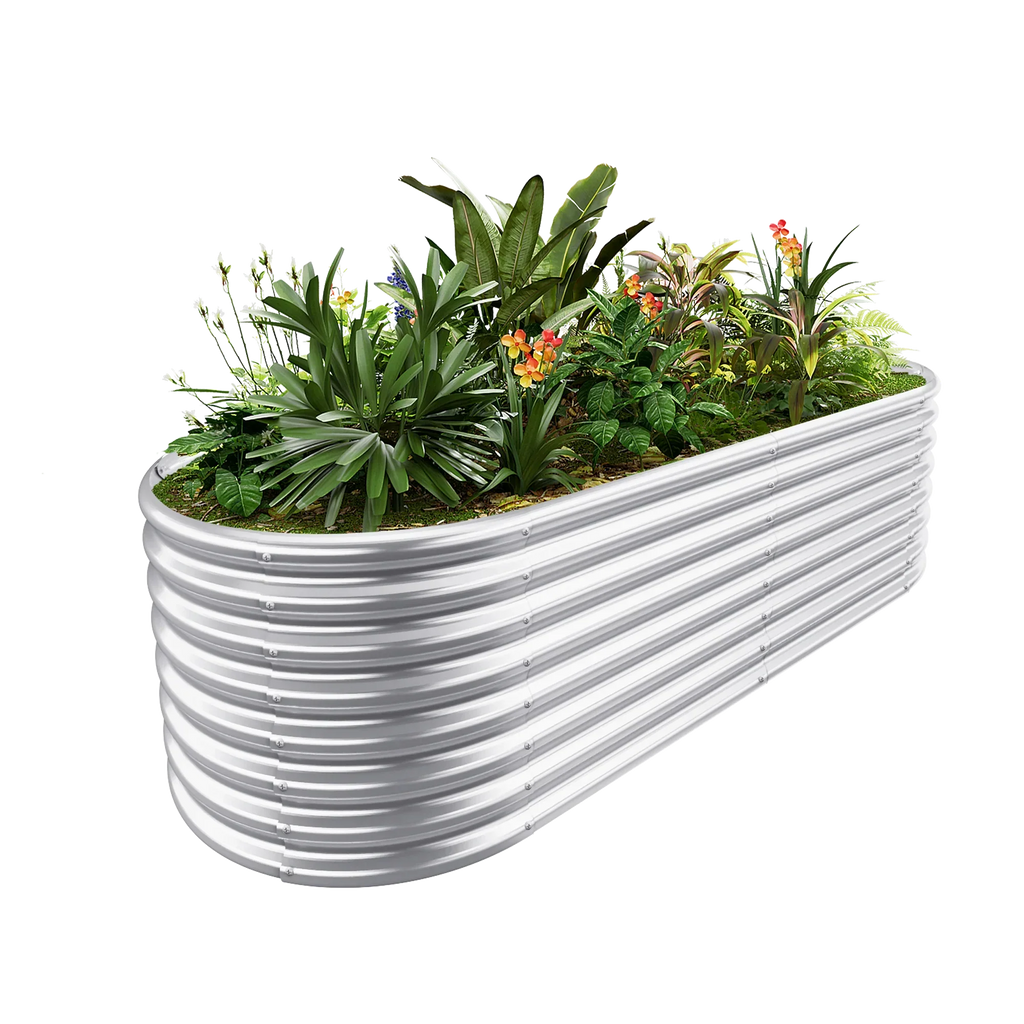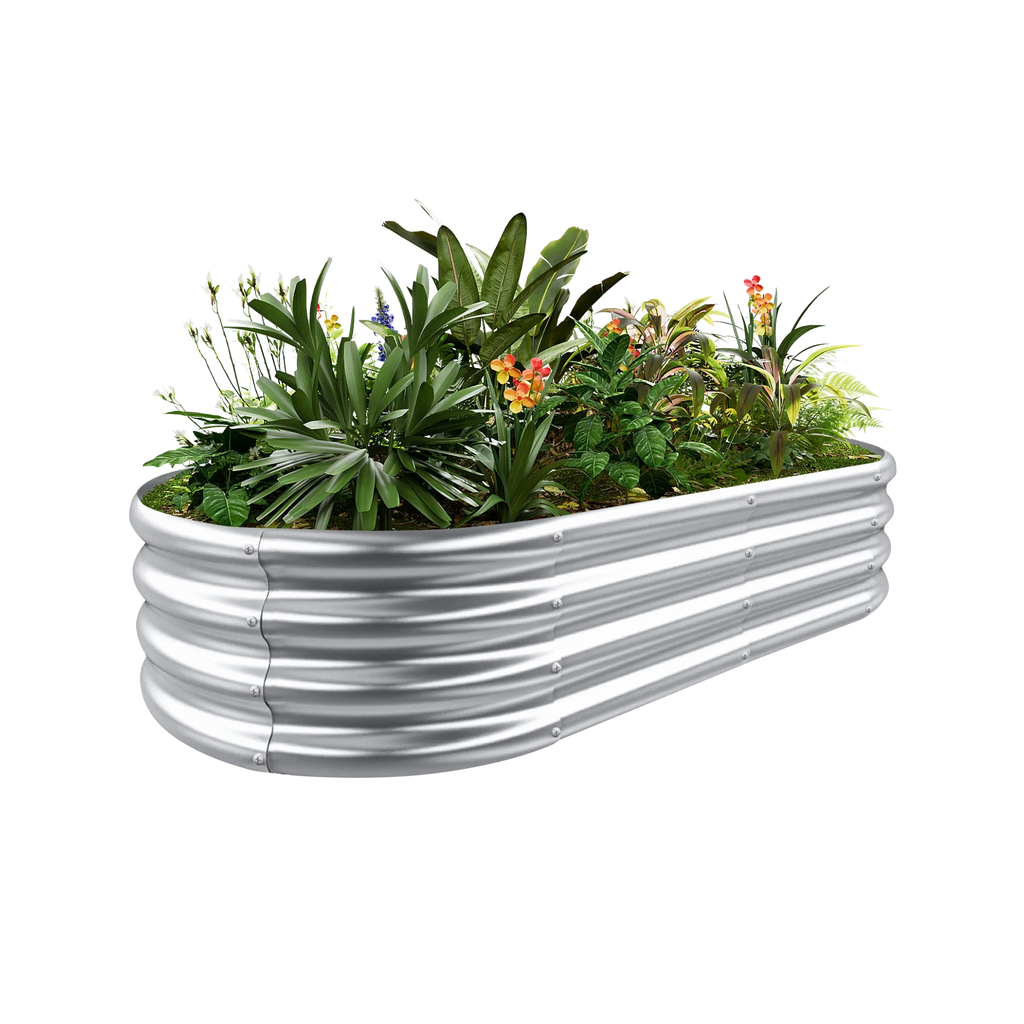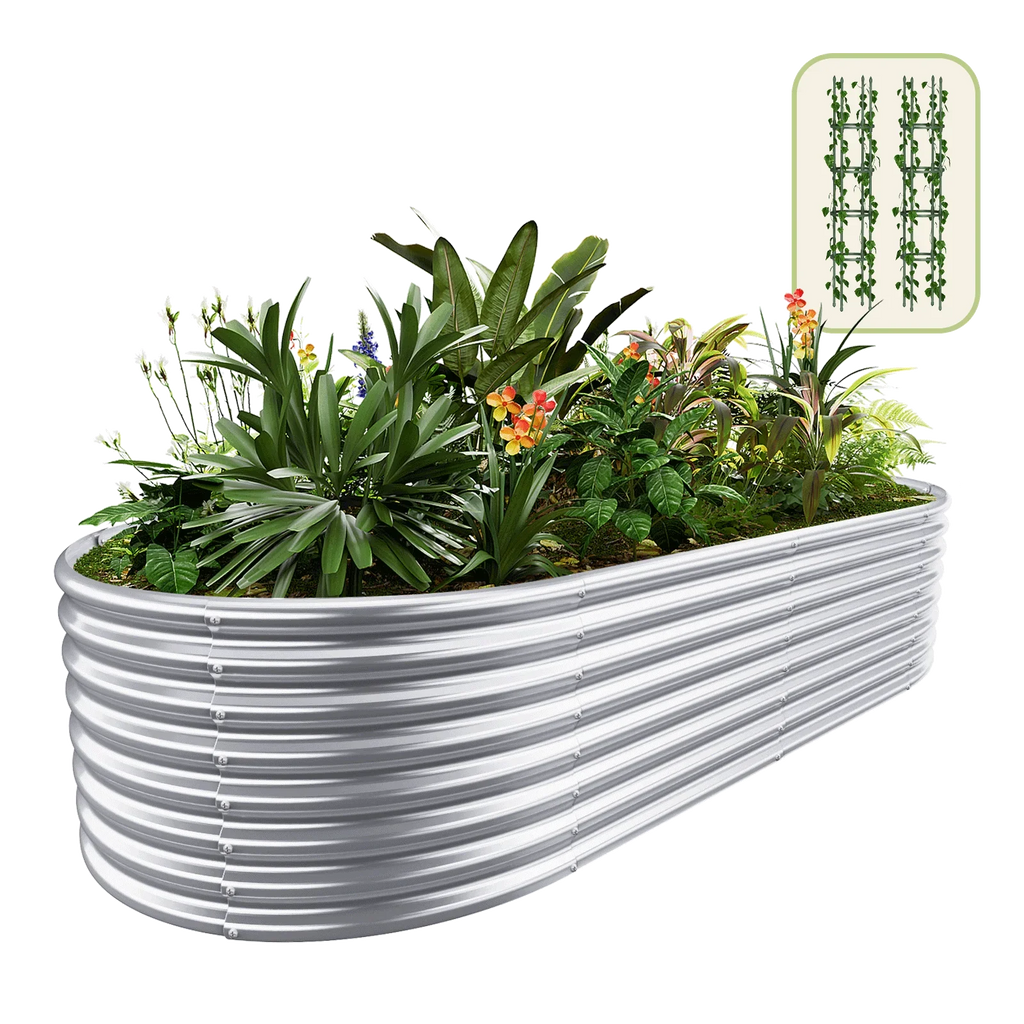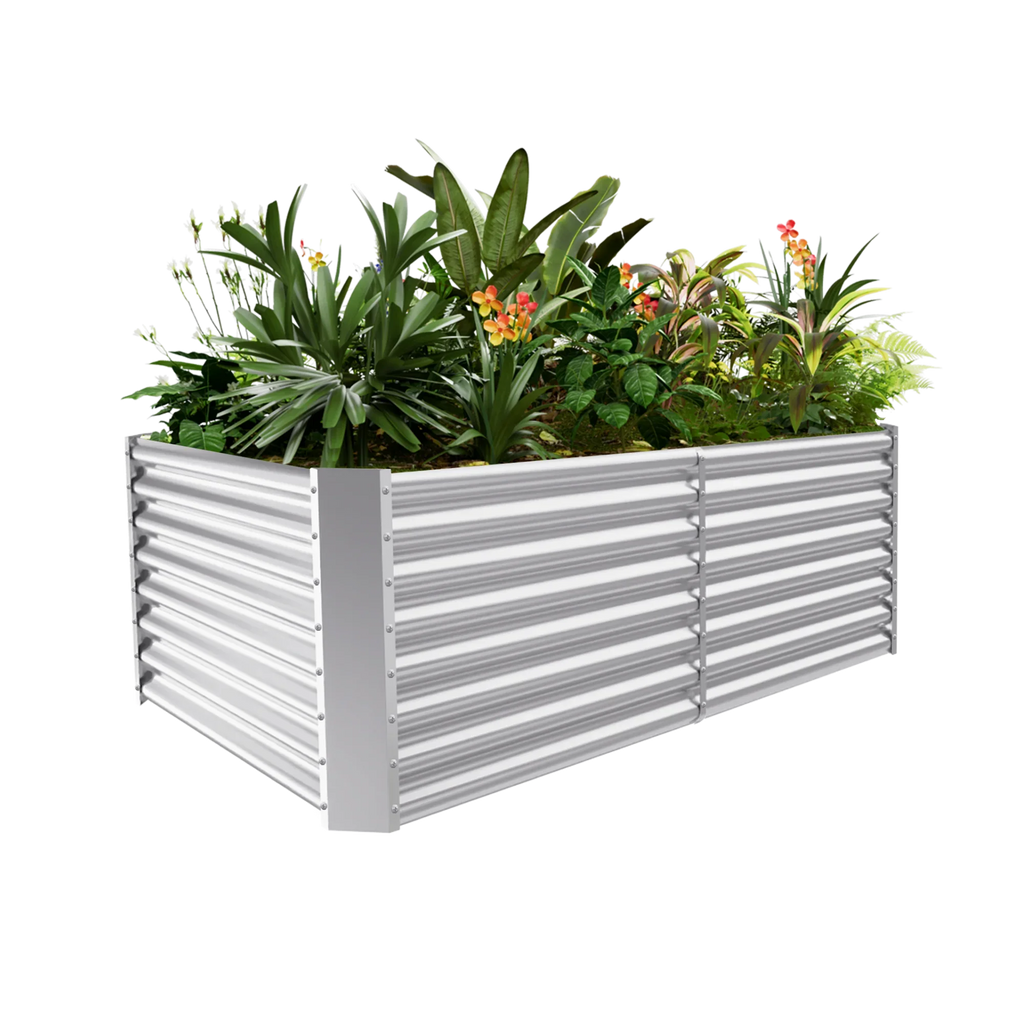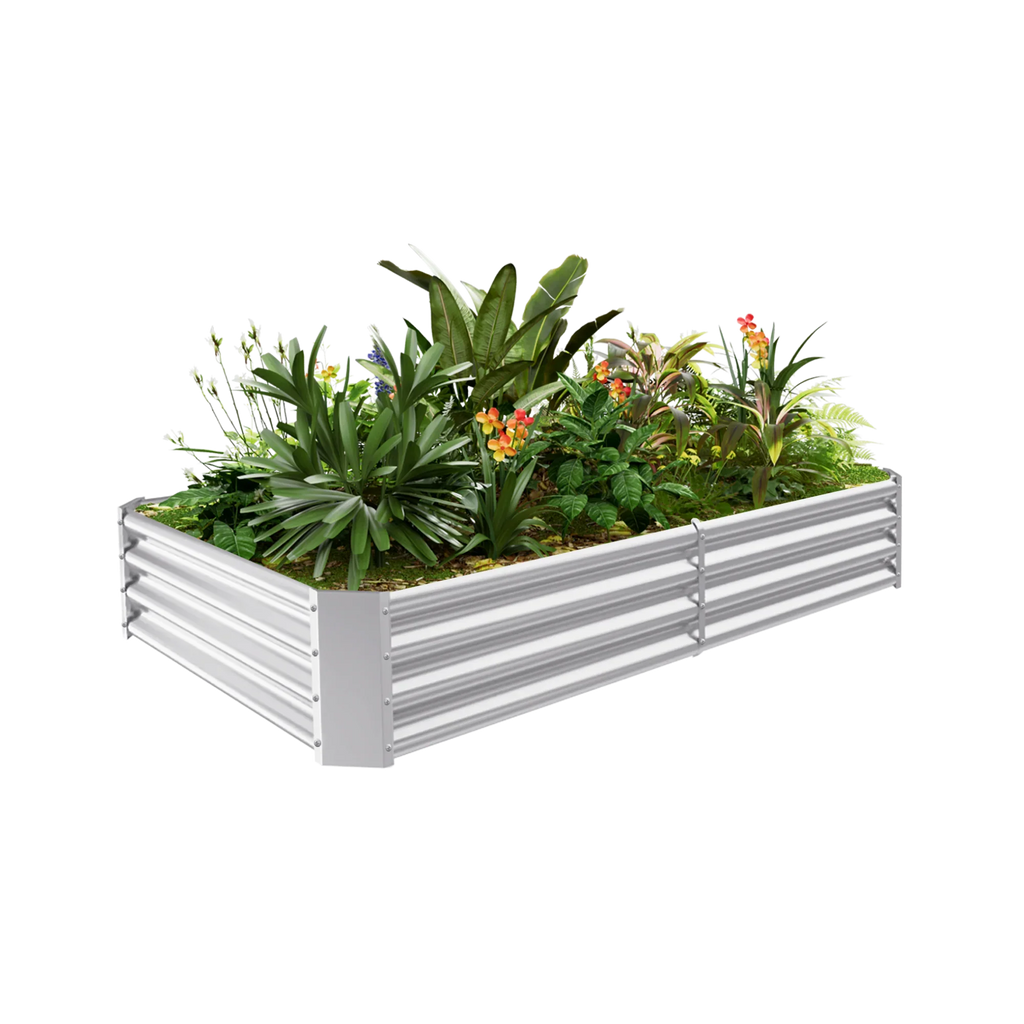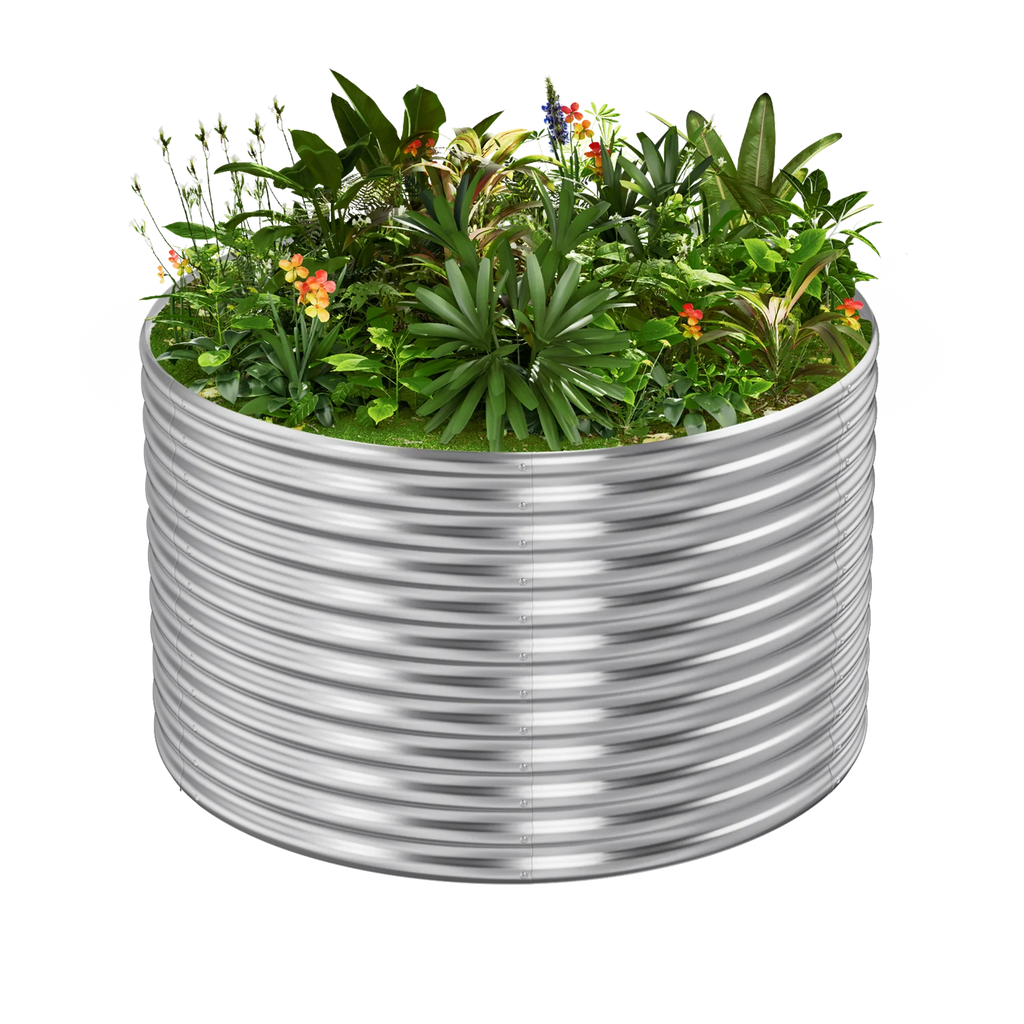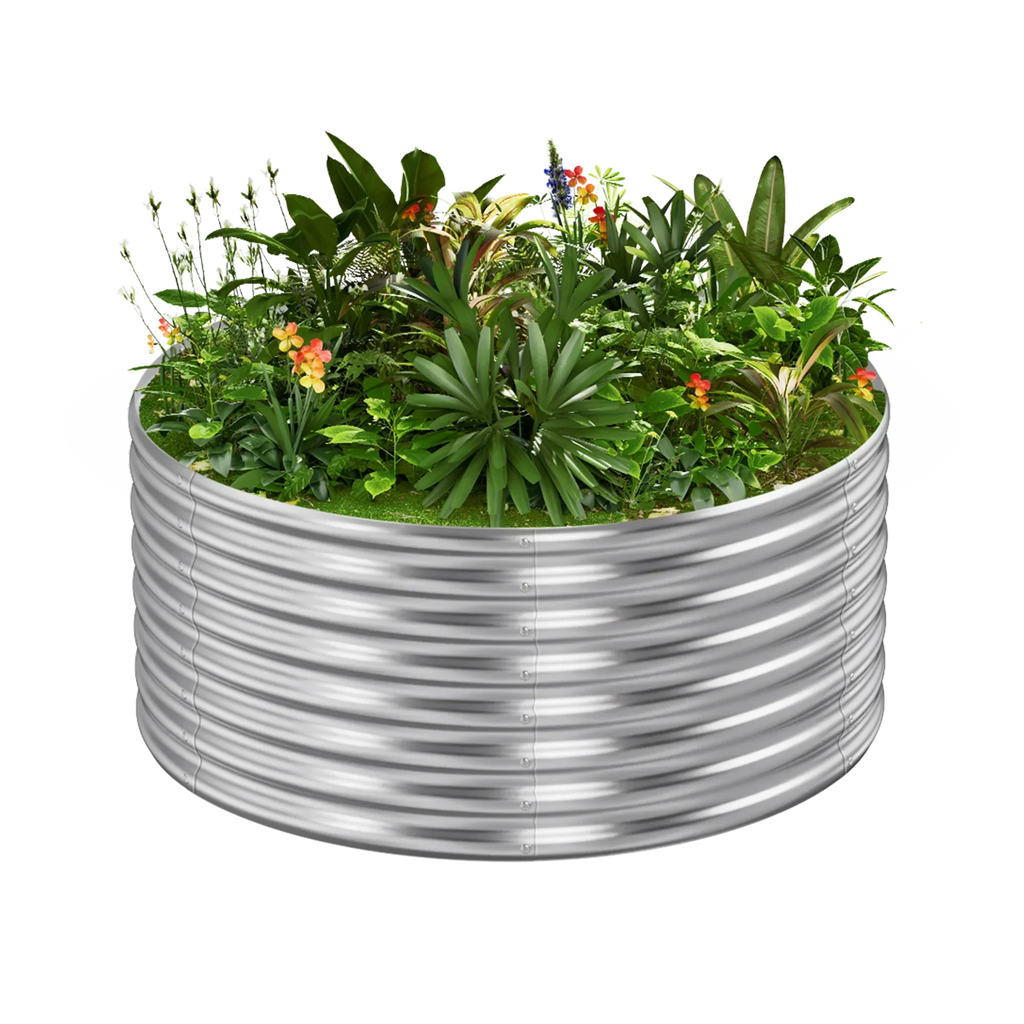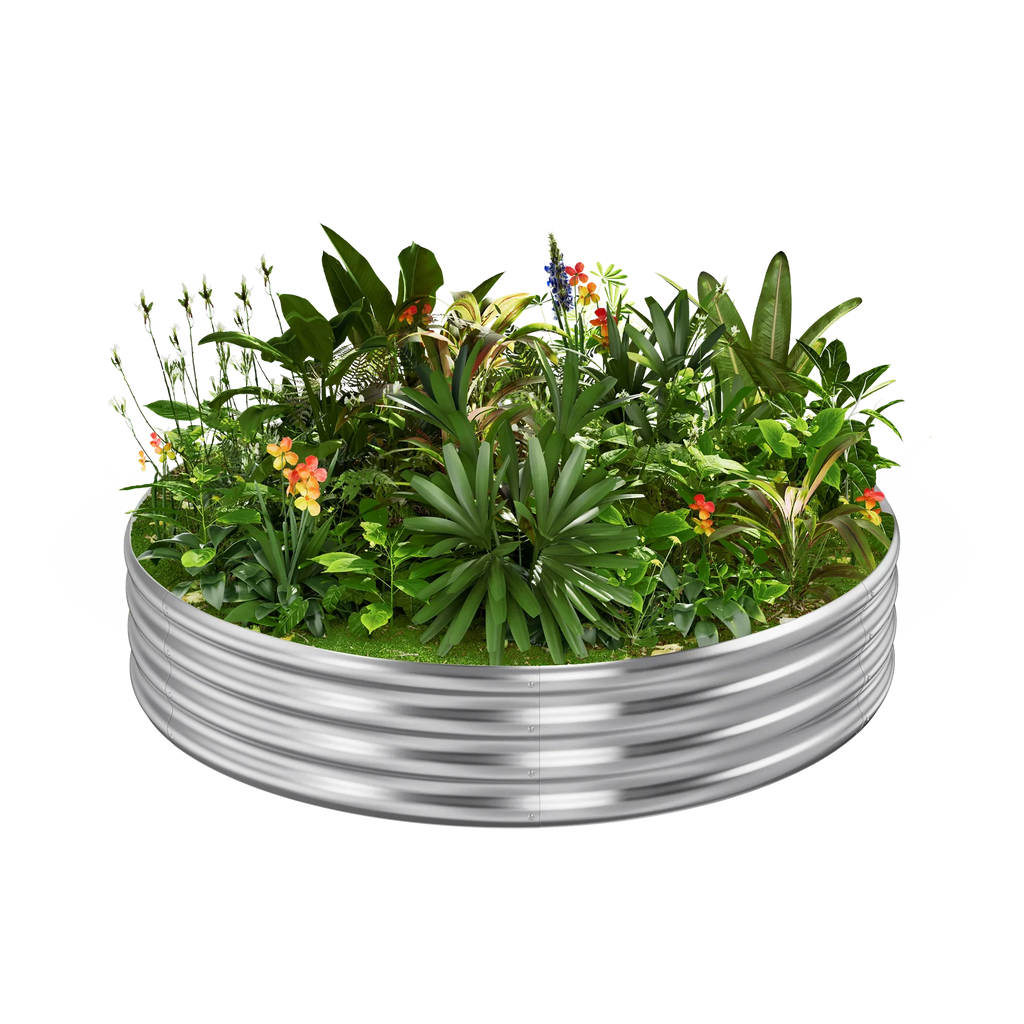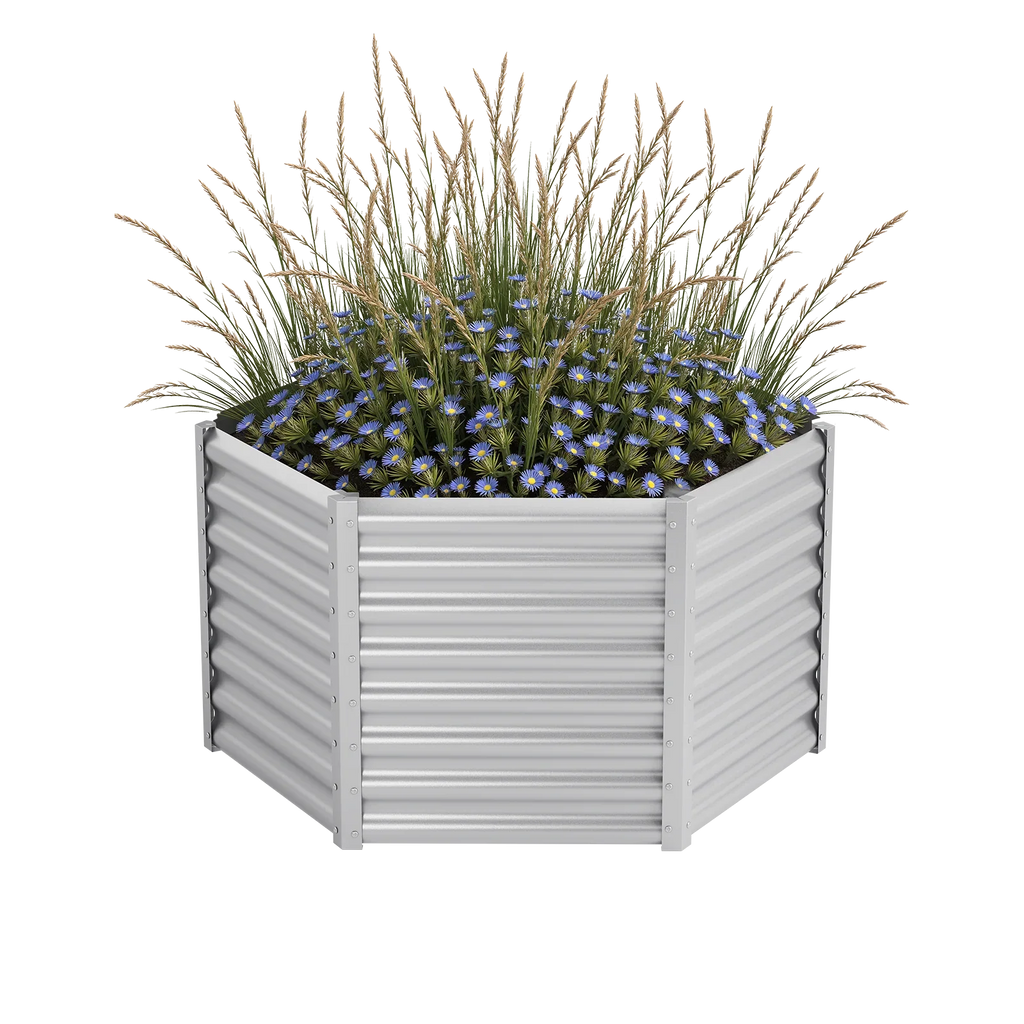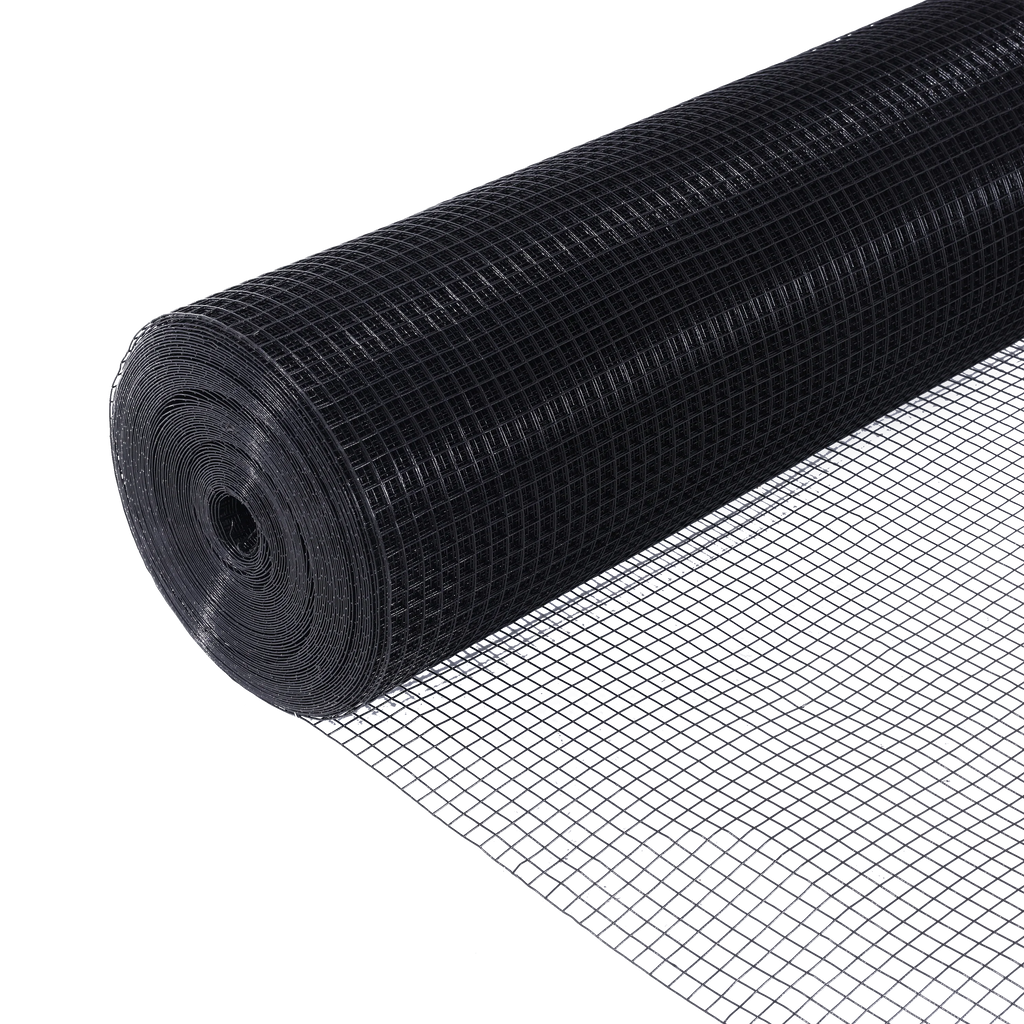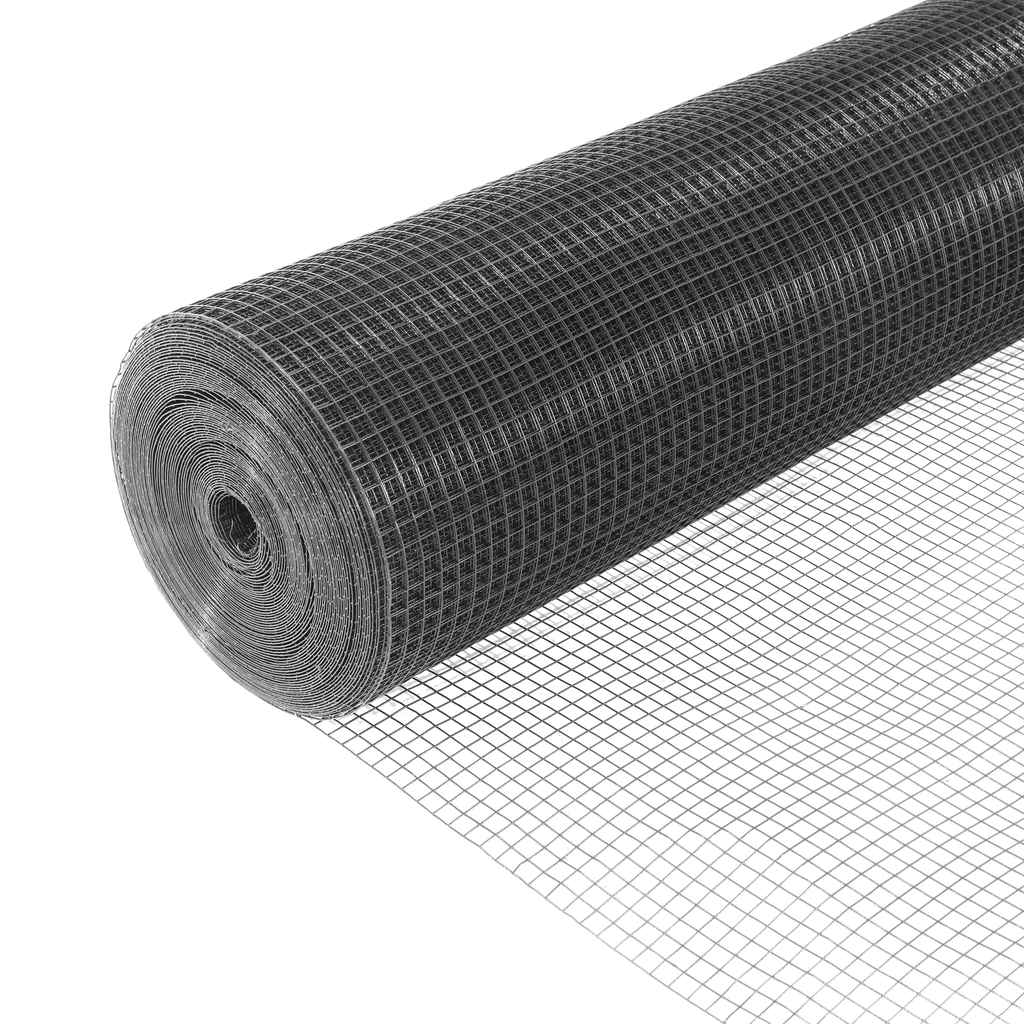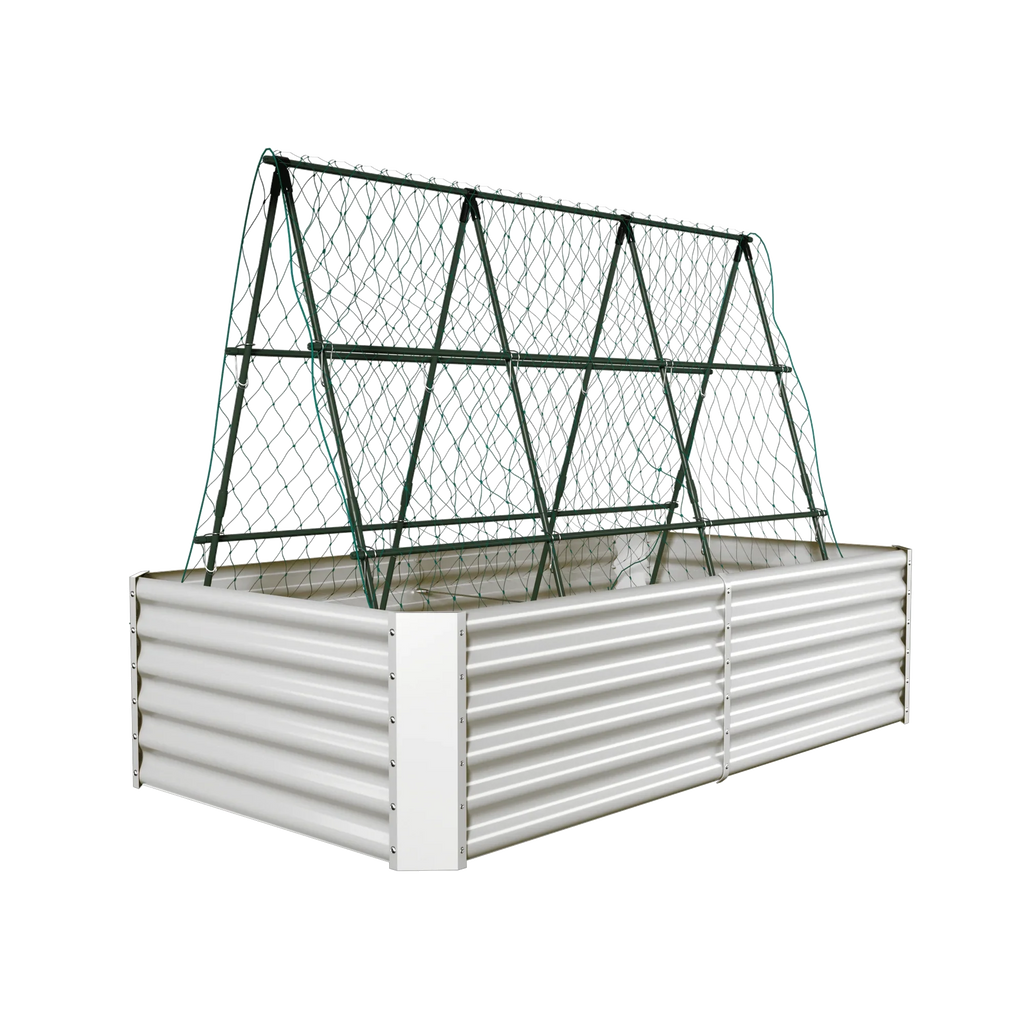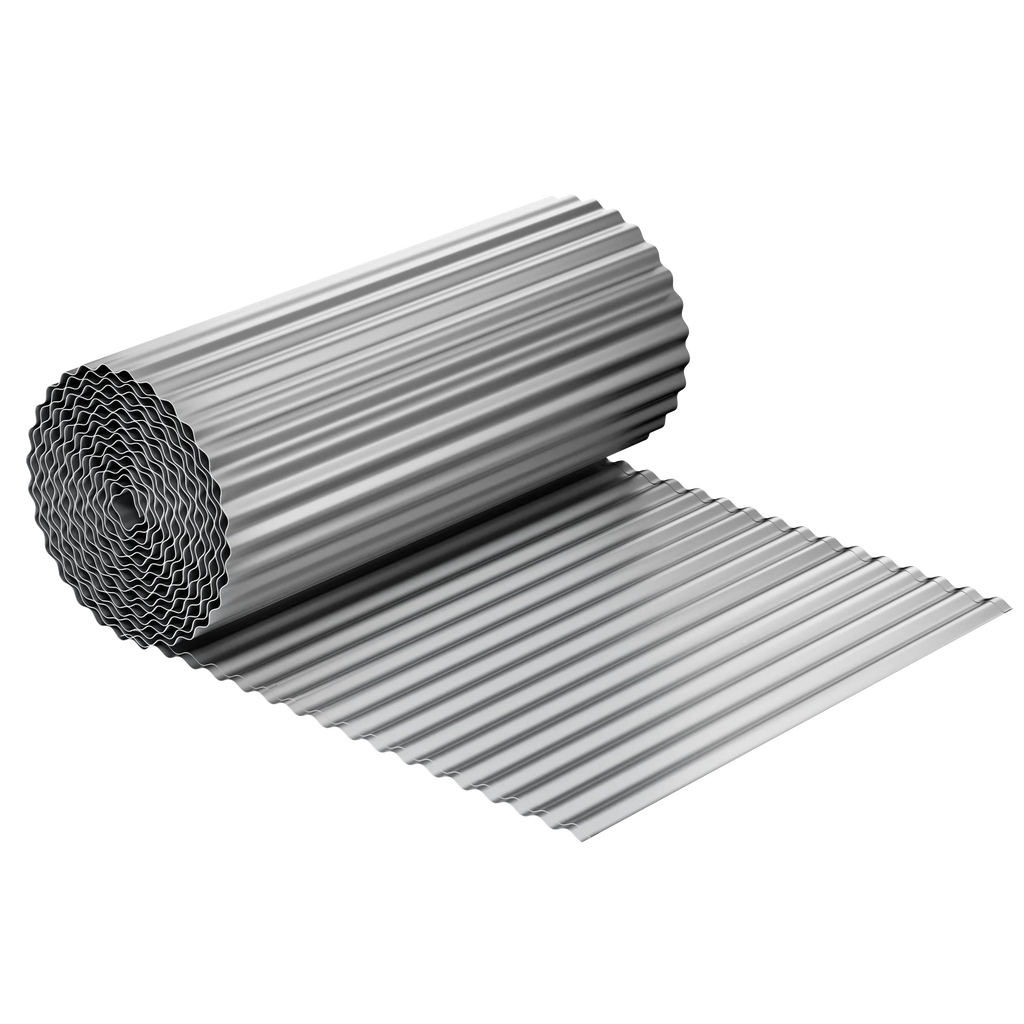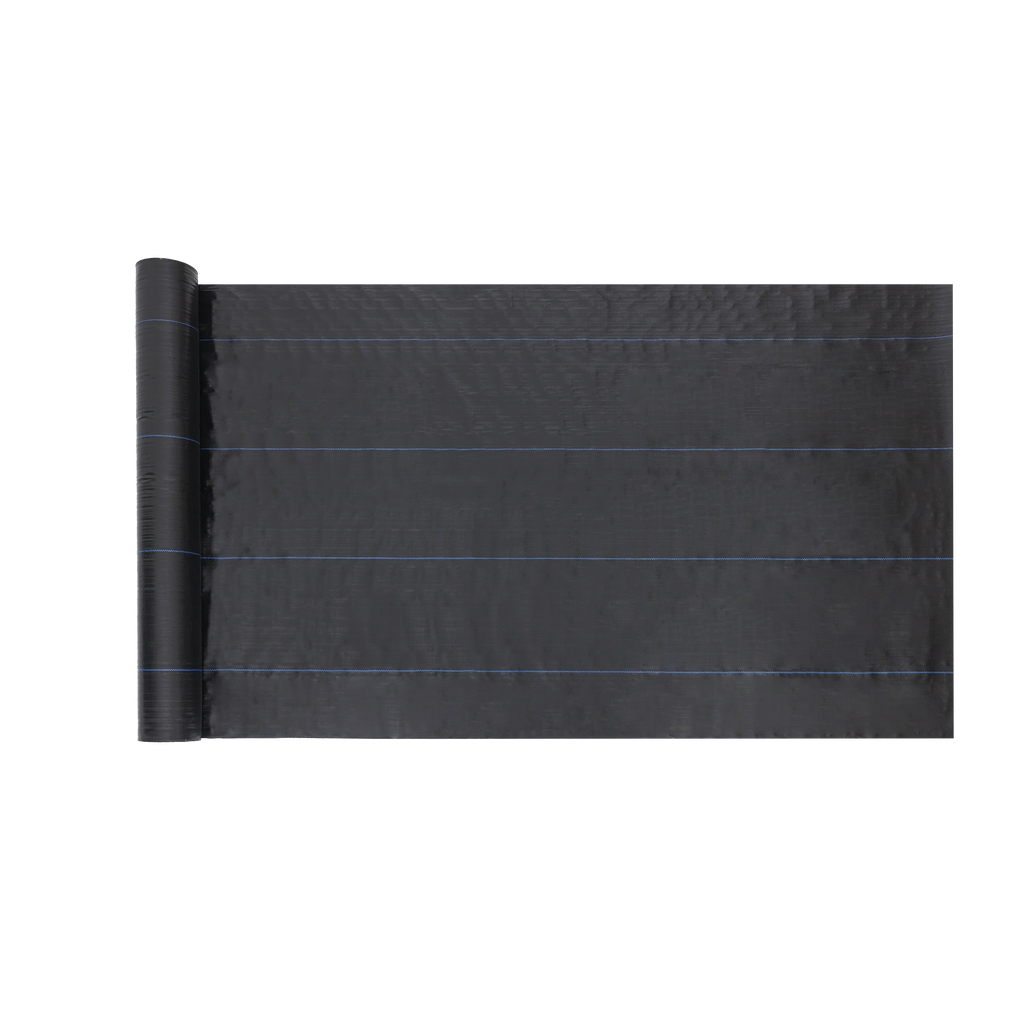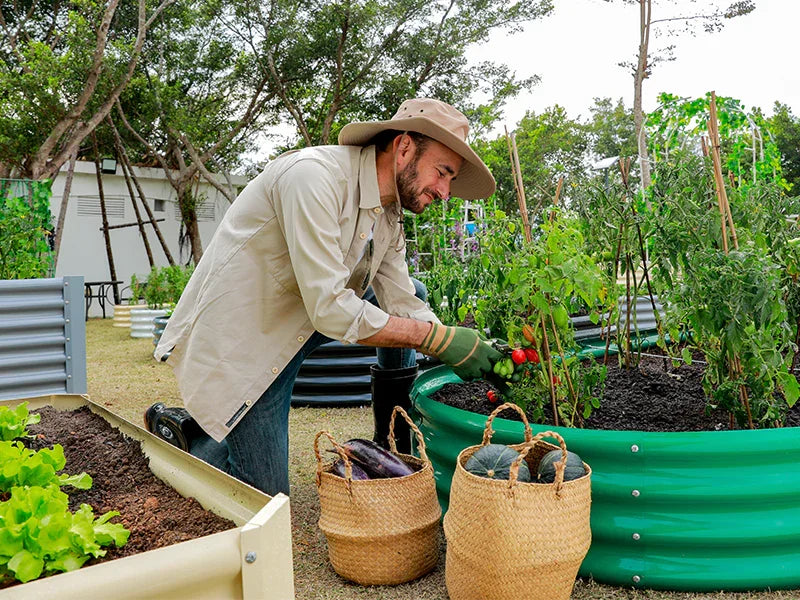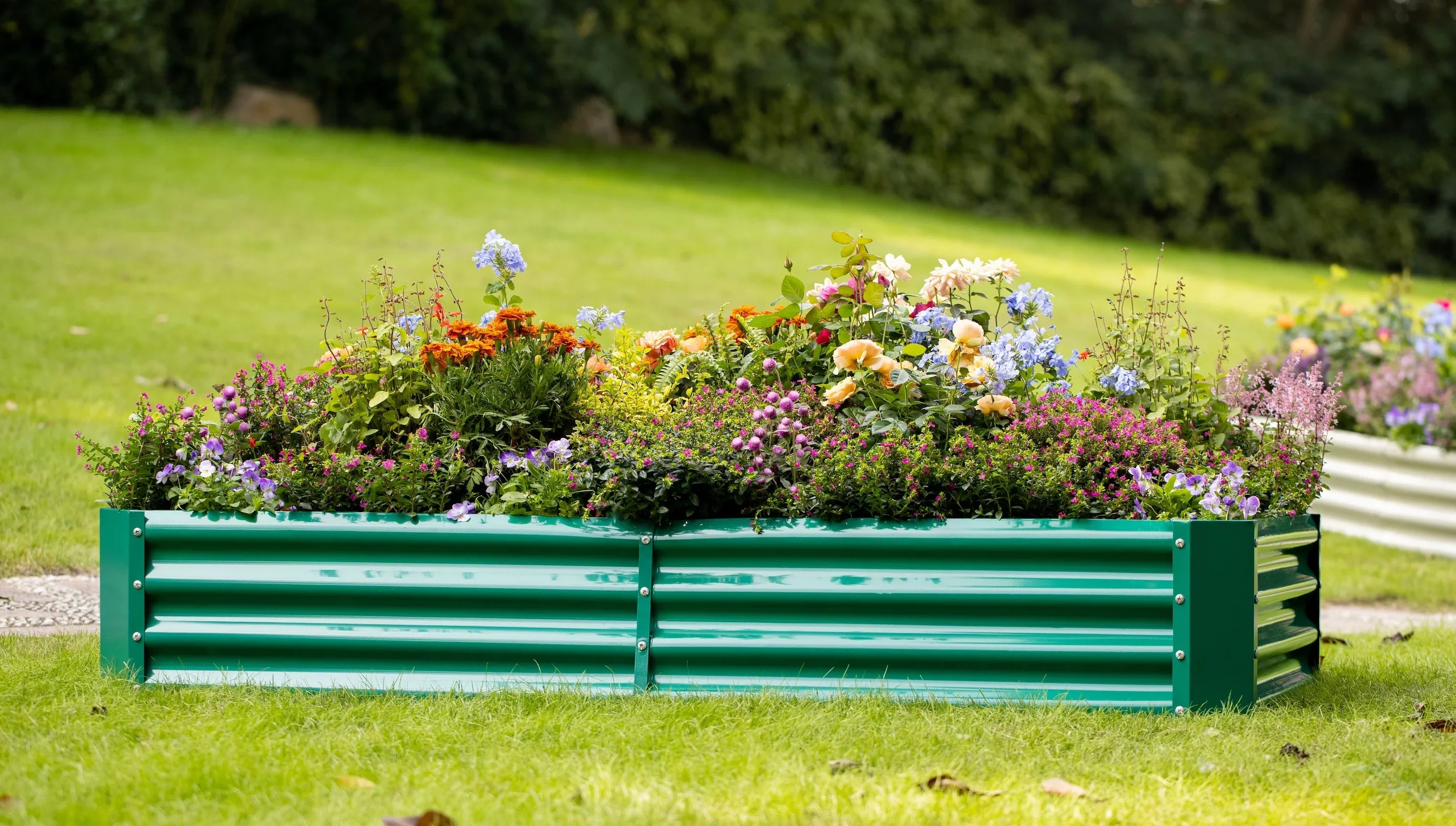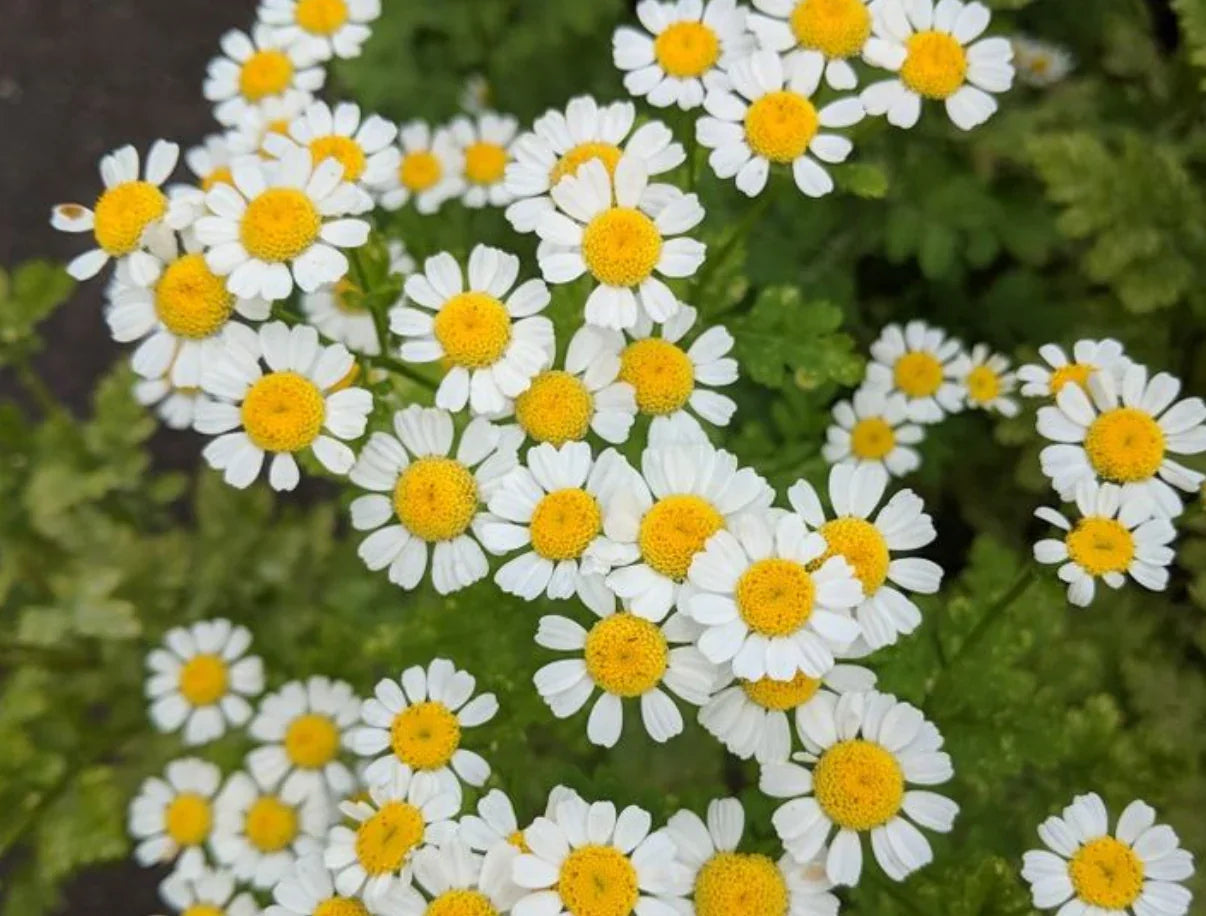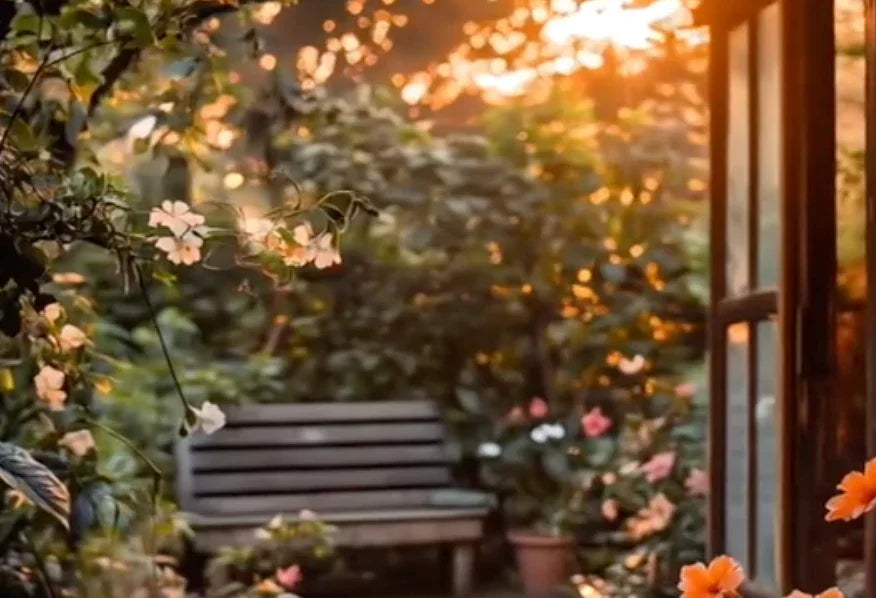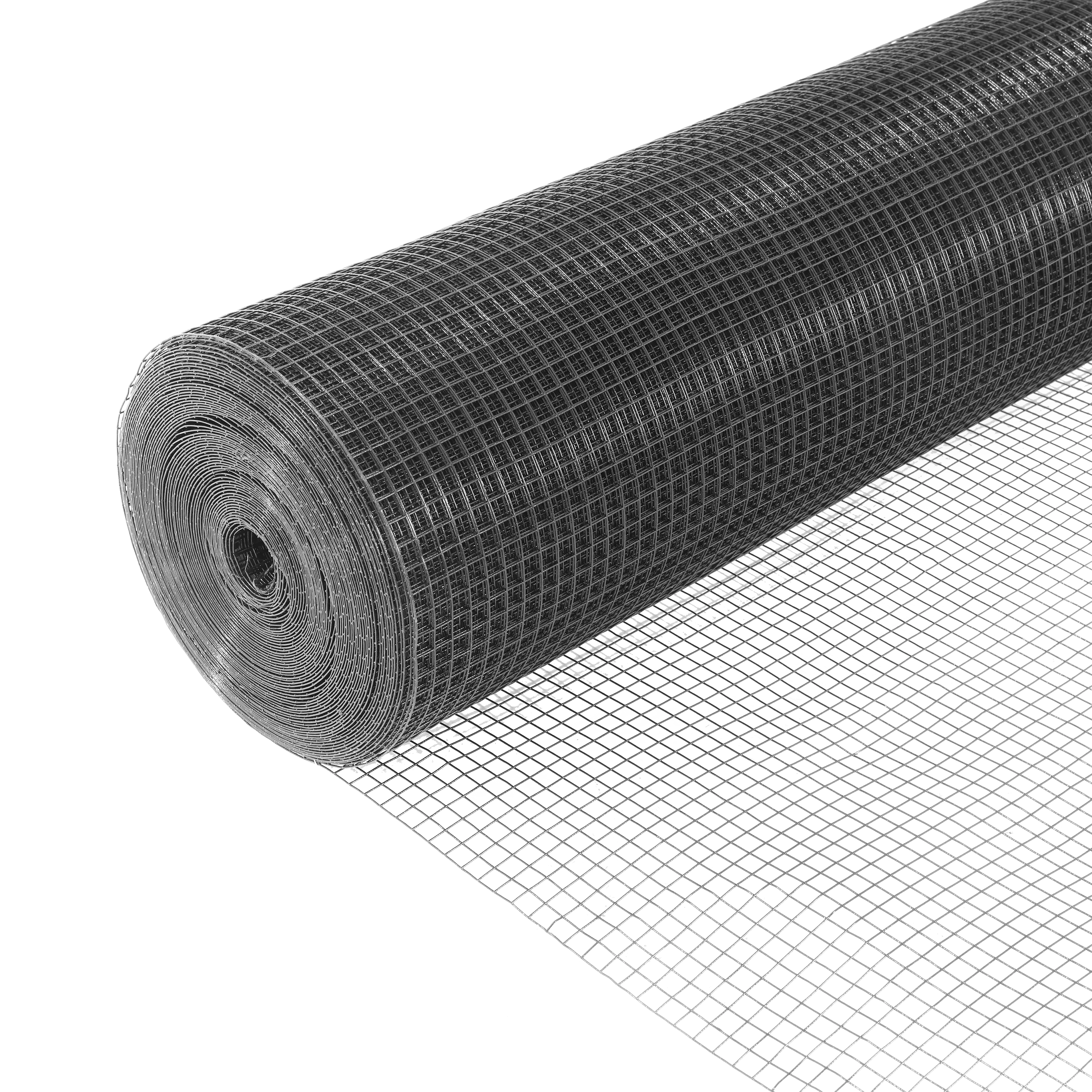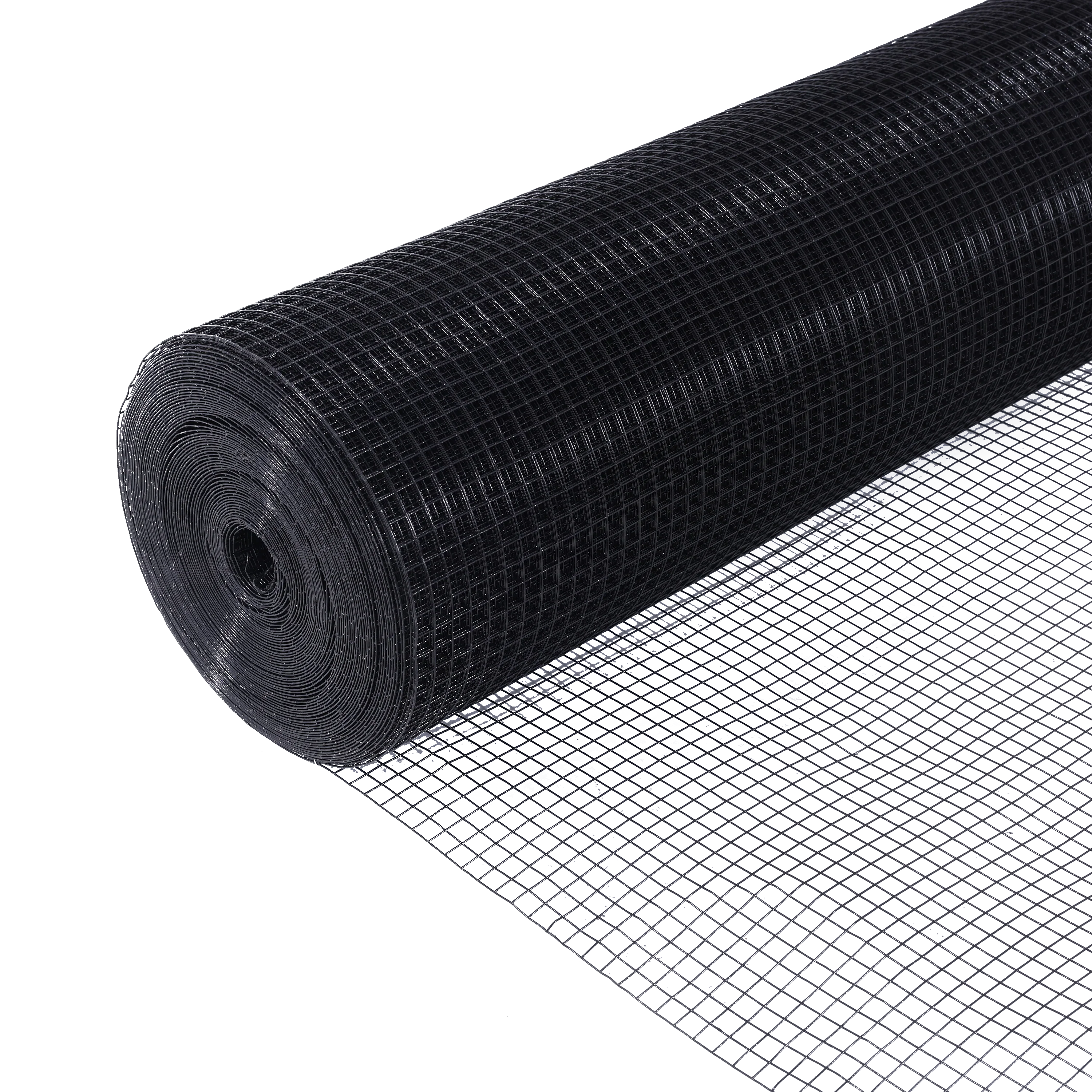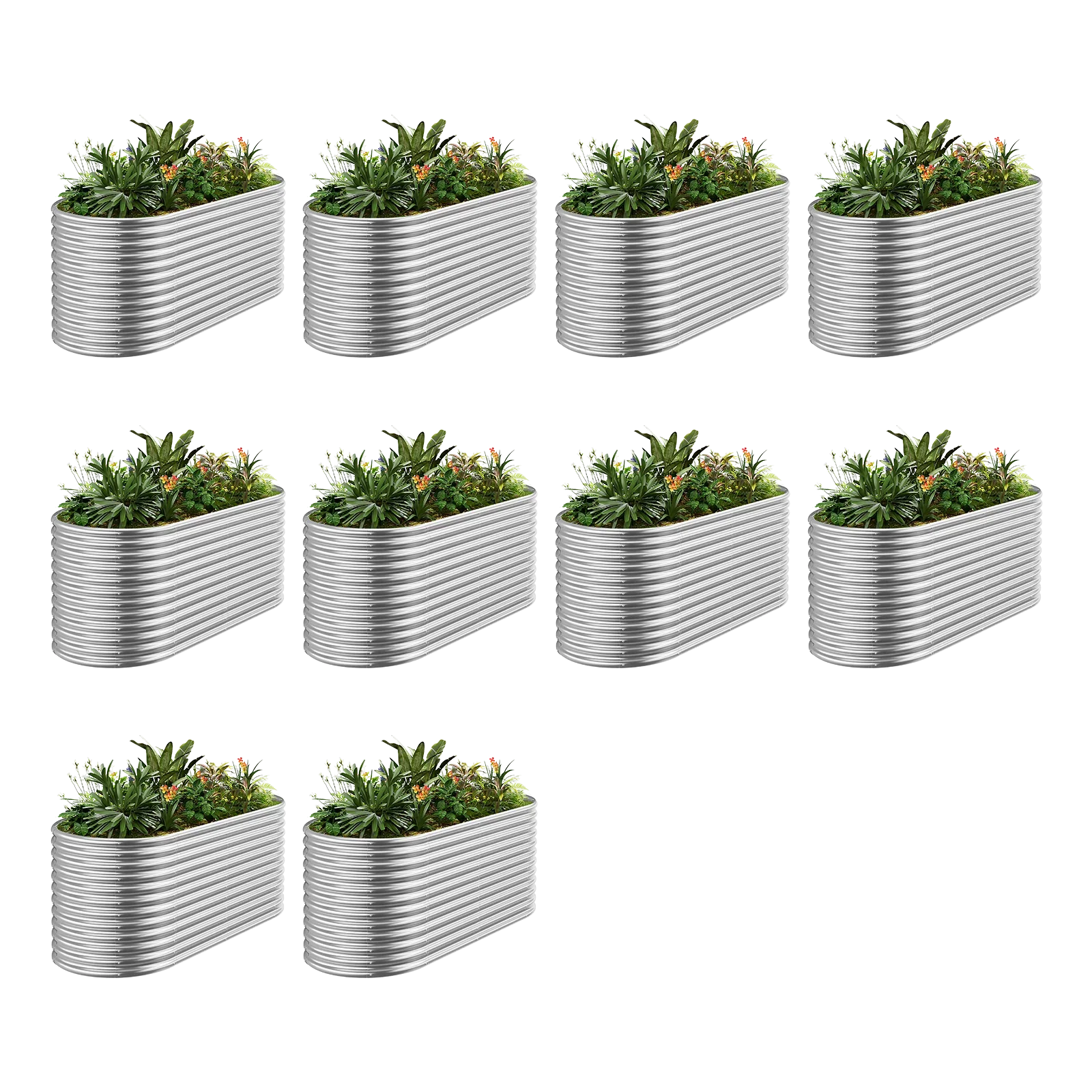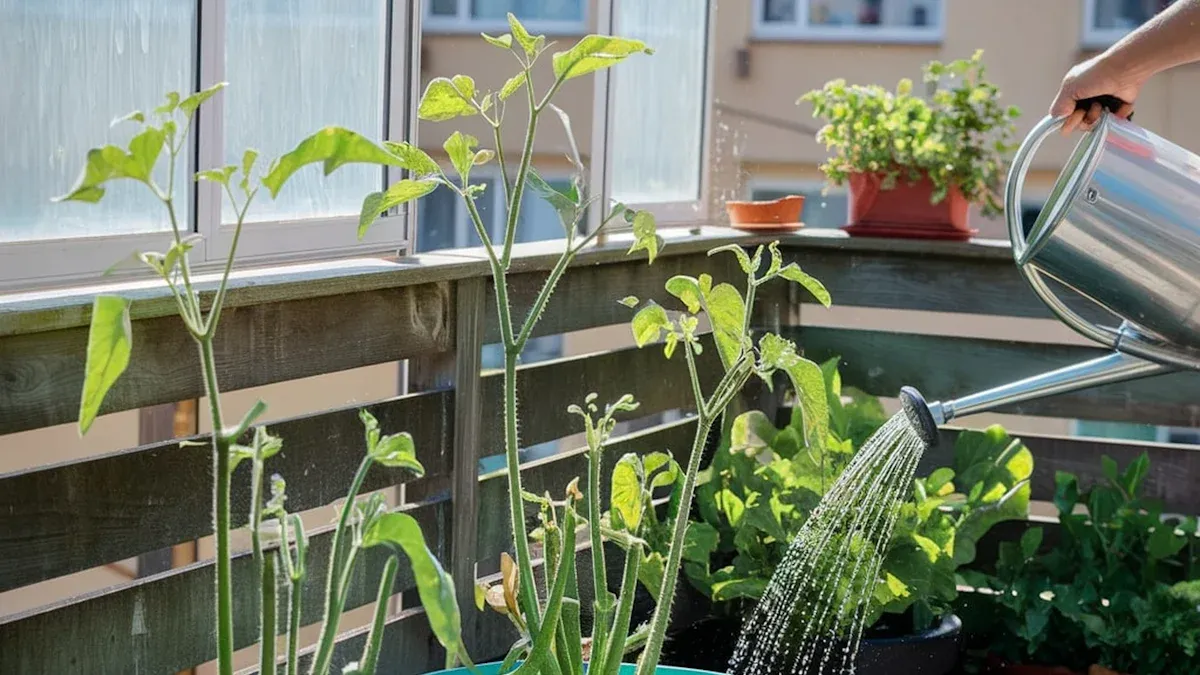
“I put together my Landguard raised garden beds corrugated iron in under an hour. My tomatoes have never looked better!” That’s what you hear from gardeners who try these beds. You notice right away how sturdy they feel. People talk about how easy the setup is and how much money you save. You get strong raised garden beds that help your plants thrive.
- Fast assembly
- Tough in bad weather
- Budget-friendly
- Great for plant growth
Key Takeaways
- Landguard raised garden beds are simple to put together. You can build them in less than an hour. You only need a screwdriver. These metal beds are strong and last a long time. They can last 15 to 20 years. They do not rot or get ruined by bugs. They can handle bad weather. Buying metal beds saves you money later. You do not have to fix them much. You do not need to buy new ones often. Raised garden beds help plants grow better. You can control the soil quality more easily. They also help stop weeds from growing. Check your soil often. Use mulch to keep the soil cool. Mulch helps the soil stay wet. This keeps your plants healthy.
Setup Experience
Ease of Assembly
When you open the box for your Landguard raised garden beds, you might feel a bit nervous. Don’t worry. Most gardeners say the assembly is quick and simple. You only need a screwdriver and a little patience. Many people finish putting their metal raised garden beds together in less than an hour. The panels fit together easily. The instructions are clear. You do not need any special skills.
One gardener shared, “I built my bed in about 45 minutes. I did it alone, and I didn’t even need help.” If you have a friend, you can finish even faster. The bolts and nuts go in smoothly. You do not have to drill or cut anything. You just line up the pieces and tighten them. Some people suggest wearing gloves because the edges can feel sharp. That’s a good tip to keep your hands safe.
First Impressions
After you finish building, you notice how sturdy the raised garden beds feel. The metal looks shiny and clean. It stands out in your yard. Many gardeners say these beds look modern and neat. You do not have to worry about paint or stains. The galvanized finish keeps rust away.
You might wonder about the cost. At first, metal raised garden beds seem more expensive than wood. But if you look at the long-term costs, you save money. Check out this table:
| Expense | Wood (Cedar) | Landguard Galvanized |
|---|---|---|
| Initial Cost | $200 | $300 |
| Replacements Needed | 3x | 0 |
| Annual Maintenance | $50 | $0 |
| Total 20-Year Cost | $950+ | $300 |
You pay more at the start, but you do not need to replace or maintain the metal beds. Over twenty years, you spend much less. Gardeners love that they can set up once and enjoy their raised garden beds for many seasons.
Everyday Use
Durability & Weather
You want your raised garden beds to last. With Landguard raised garden beds corrugated iron, you get peace of mind. These beds stand up to rain, wind, and even harsh sun. Many gardeners say they look almost new after years outside. You do not have to worry about rot, termites, or rust. The metal stays strong and does not bend or crack.
Here’s a quick look at how these beds hold up:
| Lifespan | 15-20+ years |
|---|---|
| Durability | Corrosion-resistant, rust-proof, insect-proof |
| Maintenance | Minimal maintenance required |
You can leave your beds outside all year. The galvanized finish protects them from the weather. You do not need to paint or seal them. Just check the bolts once in a while. If you live where the sun gets very hot, you might notice the metal feels warm. Some gardeners place mulch or straw around the edges to keep the soil cool. Others plant tall vegetables or flowers to give shade.
“My beds have survived three summers and two winters. They still look great, and I have not done any extra work,” one gardener shared.
Plant Growth
Your plants need good soil, water, and sun. Raised garden beds help you control these things. Many gardeners say their plants grow faster and look healthier in these beds. The metal sides keep weeds out and stop pests from digging in. You can fill your beds with the best soil mix for your vegetables or flowers.
Here are some tips from gardeners to get the most out of your raised garden beds:
- Start with a soil test. This helps you know the pH and what your soil needs.
- Add compost or well-rotted manure. This makes the soil rich and full of nutrients.
- If your soil is heavy and holds too much water, mix in perlite or coarse sand. This helps with drainage.
- For sandy soil that dries out fast, add compost or peat moss. This helps the soil hold water longer.
You might worry about the sun heating up the metal. Most gardeners say it does not hurt the plants if you keep the soil moist and use mulch. Water your beds in the morning so the soil stays cool during the day. If you notice the soil drying out, add more mulch or plant ground cover.
Tip: Check your soil every season. Healthy soil means strong plants and better harvests.
With the right care, you can grow almost anything in these beds. Tomatoes, lettuce, carrots, and even flowers do well. You get strong roots and big harvests. Raised garden beds corrugated iron give you a simple way to enjoy gardening, even if you have tough weather or poor soil in your yard.
Pros & Cons
Benefits
When you look at the pros and cons of raised garden beds, you find a lot to love about metal options. Many gardeners say these beds make life easier. Here are some of the top benefits you might notice:
- Quick Setup: You can put these beds together fast. Most people finish in under an hour. You do not need special tools or skills.
- Long-Lasting: Metal beds last for years. You do not have to worry about rot, bugs, or broken boards.
- Low Maintenance: You do not need to paint or seal them. Just check the bolts now and then.
- Clean Look: The shiny metal gives your garden a neat, modern style.
- Saves Money Over Time: You pay more at first, but you do not need to replace them like wood beds. This saves you money in the long run.
- Better Plant Growth: Many gardeners say their plants grow bigger and healthier in raised garden beds. You control the soil and keep out weeds.
“I love how my garden looks now. The beds are strong, and my veggies are thriving,” one gardener said.
Challenges
Every garden setup has its downsides. When you use raised garden beds corrugated iron, you might run into a few problems. Here are some common challenges gardeners talk about:
- Heat in Hot Weather: Metal can get warm in the sun. This sometimes makes the soil dry out faster. You can fix this by adding mulch or planting shade-loving crops along the edges.
- Blocked Air Flow: Metal sides can limit how much air gets to the soil. This can lead to too much water and root rot if you are not careful. Try using well-draining soil and avoid overwatering.
- Rust Over Time: Even though galvanized metal resists rust, it can still corrode, especially if your soil is acidic. Check your beds each season and avoid using harsh chemicals.
- Zinc Leaching: Galvanized steel can release zinc into the soil. Too much zinc can harm plants and people. Most gardeners say this is not a big problem if you use good soil and keep the pH balanced.
- Cost at First: Metal beds cost more than wood at the start. But you save money later because you do not need to replace them.
Here’s a quick table to help you see the pros and cons side by side:
| Pros | Cons |
|---|---|
| Fast and easy setup | Can get hot in full sun |
| Durable and long-lasting | May block air flow to soil |
| Low maintenance | Possible rust in acidic soils |
| Modern, clean appearance | Zinc leaching risk |
| Saves money over time | Higher upfront cost |
| Great for plant growth |
If you know about these challenges, you can plan ahead. Most gardeners find that the benefits outweigh the problems. You just need to use a few smart tricks to keep your raised garden beds working well.
Real Stories
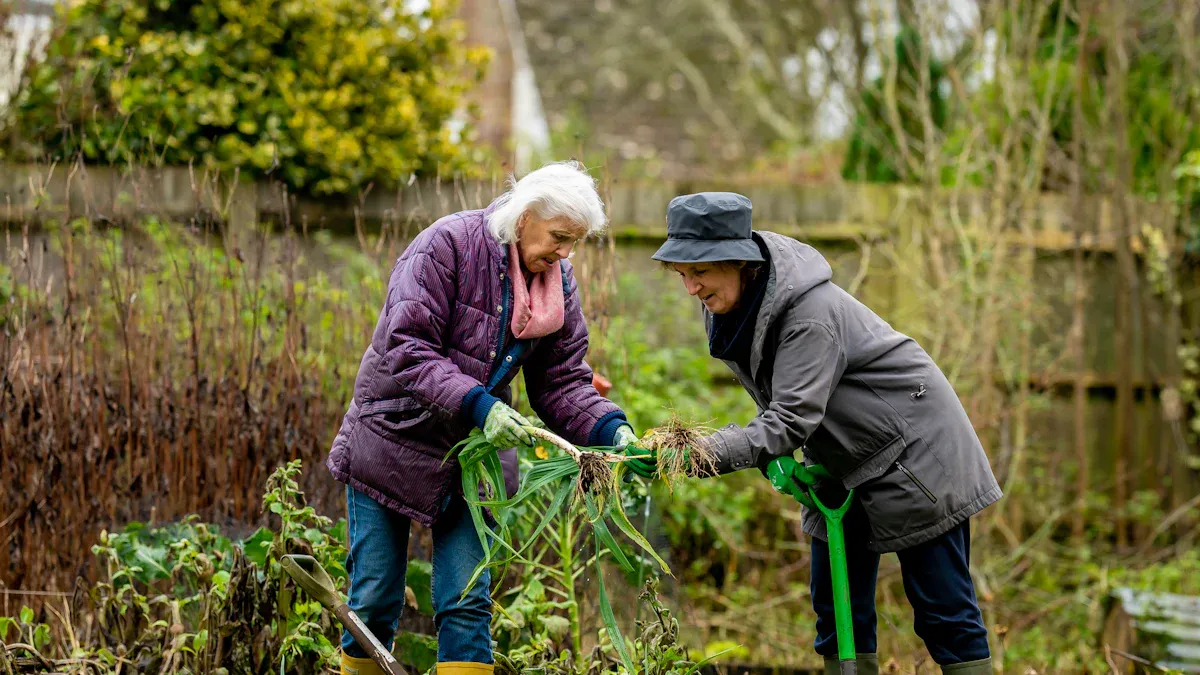
Testimonials
You might wonder what other gardeners say about raised garden beds corrugated iron. Many people share their stories online. Here are some common things you hear:
- The beds feel sturdy and last for years.
- You can put them together without much trouble.
- The shiny metal looks great in your yard.
- Some people find a few parts missing or not perfect, but most still feel happy with their choice.
- The price feels fair for what you get.
“I switched to raised garden beds corrugated iron last spring. I finished the setup in less than an hour. My backyard looks so much better now, and my neighbors always ask where I got them.”
“I had one bolt missing, but customer service sent a new one right away. The beds are strong, and I love how easy they are to clean.”
You see that most gardeners enjoy the look and strength of these beds. A few mention small problems with parts, but they still recommend them to friends.
Before & After
When you move from wood or plastic to raised garden beds corrugated iron, you notice big changes. Your garden looks neater. You spend less time fixing broken boards. You see your plants grow taller and healthier. One gardener said, “My old wooden beds rotted after two years. Now, with metal, I just plant and watch things grow.”
You might have tried galvanized tubs for planters before. Raised garden beds corrugated iron give you more space and a cleaner look. Your tomatoes, lettuce, and flowers can spread out. You do not worry about rust or bugs. After the switch, you enjoy gardening more and get better harvests.
“I used to dread spring because I had to rebuild my beds. Now, I just add soil and start planting. My garden has never looked this good.”
Tips & Advice
Installation
You want your raised garden beds to last and look great. Start by picking a sunny spot. Most vegetables and herbs need at least six hours of sun each day. Check the amount of sun needed for your favorite plants before you choose a location. If you have a small patio or balcony, you can still use raised garden beds. Urban gardening works well with these beds.
Lay out your panels on flat ground. Use a screwdriver to connect the pieces. Wear gloves to protect your hands from sharp edges. Make sure the bolts are tight. After you build your bed, fill it with good soil. Mix compost, peat moss, and sand for healthy roots. Test your soil every season. This helps you know what nutrients your plants need. Water your soil before planting. This keeps it moist and ready for seeds.
Tip: Add mulch on top of the soil. Mulch keeps the soil cool and helps hold water. You will notice the ease of gardening when you do not have to weed as much.
If you want inexpensive raised garden bed ideas, try using leftover bricks or stones to edge your beds. You can also use straw bales for extra insulation. These tricks save money and make your garden unique.
Best Plants
You can grow almost anything in a herb raised garden. Many gardeners love planting herbs like basil, mint, and parsley. Herbs do well in raised garden beds because you control the soil and water. You get fresh herbs for cooking and enjoy their scent in your yard.
Vegetables like tomatoes, lettuce, and carrots thrive in these beds. Raised garden beds help you manage the amount of sun needed for each crop. Flowers also look beautiful and add color to your space. If you want inexpensive raised garden bed ideas, mix herbs and flowers together. This gives you a pretty and useful garden.
Here are some popular uses for your beds:
- Home vegetable gardens: Grow fresh veggies and herbs for healthy meals.
- Flower cultivation: Plant bright flowers to make your yard cheerful.
- Urban gardening: Create green spaces on balconies or patios.
- Educational use: Teach kids about soil, plants, and nature in schools or community gardens.
“My herb raised garden gives me fresh basil all summer. I love the ease of gardening and the way my garden smells after rain.”
Try different plants each season. You will find what works best in your soil and sun. Enjoy the process and watch your garden grow.
You’ve seen how Landguard raised garden beds stand up to tough weather and make gardening easier. Most gardeners say these beds match what the ads promise, especially when it comes to durability and simple setup. Take a look at why people choose them:
| Why Choose Landguard? | What You Get |
|---|---|
| Durability | No rot, no warping |
| Pest Resistance | Fewer bugs in your soil |
| Low Maintenance | Just a quick wipe and check |
| Good Drainage | Roots stay healthy |
| Modern Look | Clean style for your yard |
| Eco-Friendly | Recycled materials |
If you want strong raised garden beds that handle sun, water, and changing seasons, these are worth a try. Think about your space, your plants, and how much sun you get. Try the tips from other gardeners, and share your own story in the comments!
FAQ
How long do Landguard corrugated iron beds last?
You can expect these beds to last 15 to 20 years. The galvanized metal resists rust and damage from weather. Most gardeners say their beds still look great after many seasons.
Do the metal beds get too hot for plants?
The metal can feel warm in direct sun, but your plants stay safe if you use mulch and keep the soil moist. Many gardeners grow healthy veggies and flowers even in hot weather.
Can I move the beds after assembly?
Yes, you can move them if needed. It’s easier to move the beds before you fill them with soil. Ask a friend to help lift and carry the panels to a new spot.
What tools do I need for assembly?
You only need a screwdriver and gloves. The kit comes with all the bolts and nuts. Most people finish the setup in under an hour.
Tip: Wear gloves to protect your hands from sharp edges during assembly.






